There are so many different resources to learn Japanese out there, so where do you start? We introduce 8 sites and blogs that are perhaps not as well-known but still offer some great material for people looking to improve their Japanese skills. We organized them by level and purpose, so please check them out!
Japanese Sites and Blogs for Beginners (JLPT N5~N4)
やさしい日本語ブログ

やさしい日本語ブログ (Yasashii Nihongo Blog) which translates to “Easy Japanese Blog” is a blog written by a Japanese teacher - Meika Sensei - with consistent posts using “easy Japanese”.
The great thing about this blog is that you can read either
-
Posts for Beginners - These are posts written in basic Japanese, with easy to read phrases and not too long in length. The posts all include furigana over the kanji so you don’t have to stumble over words you don’t know. And any advanced words or terms in Japanese include an English translation next to it so you don't have to stop to look them up.
or -
Posts for Intermediate - This is the same exact content as the posts for Beginners but with no furigana! So once you’re able to read a good number of kanji, or want to challenge yourself, you can try reading just the intermediate posts. There is sometimes more detailed content in the intermediate posts as well.

For example, compare the beginner and intermediate level posts for “Ghibli Park is Open!”, or the beginner and intermediate level posts about sharing your own interests and recommendations.
Not only is this a great resource to monitor your progress in reading Japanese, but it also gives you simple and easy reading options so you get in the habit of reading more Japanese on your own and not just in a textbook.
The topics are easy to relate to and understand, and are based on the season and trends in Japan. You can get to know things going on in Japan as they happen, something that's important when learning Japanese especially when living abroad. You can study the language while getting to know and enjoy life and culture in Japan.
Meika Sensei encourages readers to also leave comments with their thoughts in relation to the topic - in Japanese she hopes!
Nihongo Day by Day
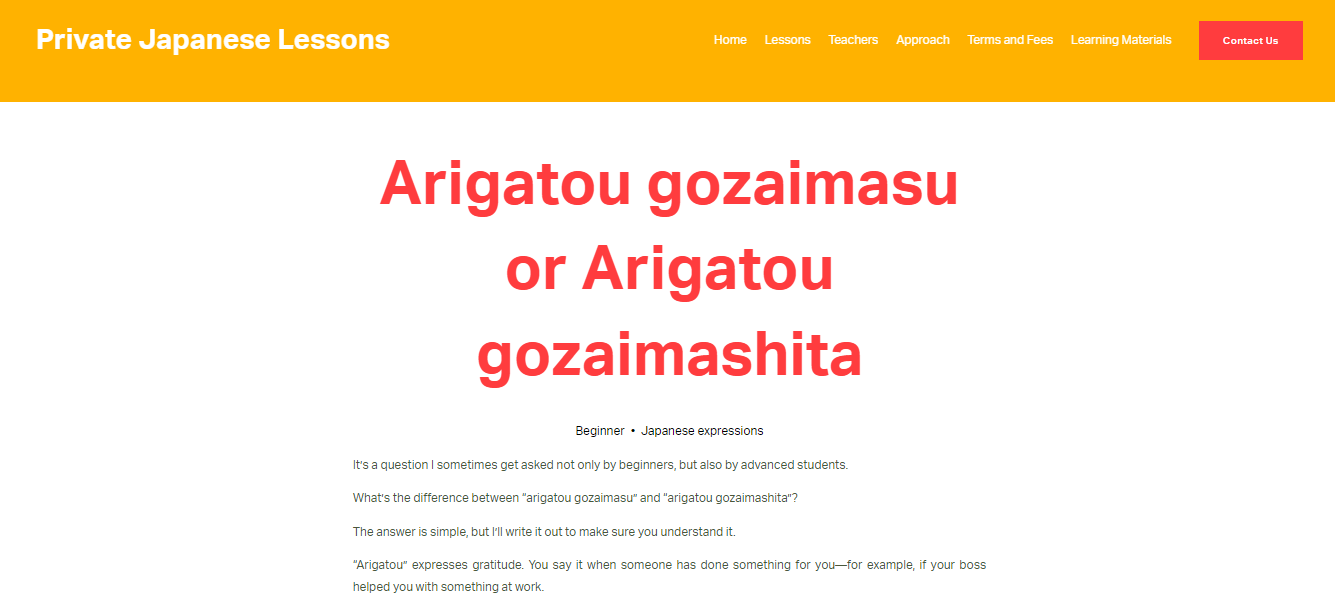
Nihongo Day by Day are blog posts on the site Private Japanese Lessons (PJL). They offer a variety of Japanese language resources on their site, including as their name suggests, private lessons.
The blog posts are in a mix of Japanese and English, and the English posts are short and easy to understand, perfect for beginners and those who stumble on questions - especially regarding the difference between 2 words - when studying. The examples - such as this post Arigatou gozaimasu or Arigatou gozimashita - uses real life examples, so the lessons are very practical as well.
They also have an Instagram account and a series of fun and easy to understand YouTube videos called “No longer lost in translation” which serve to answer common questions when studying the Japanese language.
Here’s episode 1 titled 「ない」だけで答(こた)えない! Don't just reply "Nai"!
One of the head teachers at PJL, Minako Okamoto, also has blogs with posts for more advanced Japanese learners in both Japanese and English, which are definitely worth checking out as well!
If you’re interested in private lessons, they customize the teaching style based on what you’re interested in, your learning style and your environment, so find out which course is the best for you!
Writer's Pick
Japanese Sites and Blogs for Intermediate Learners (JLPT N3~N2)
日本語ラーニングサポート
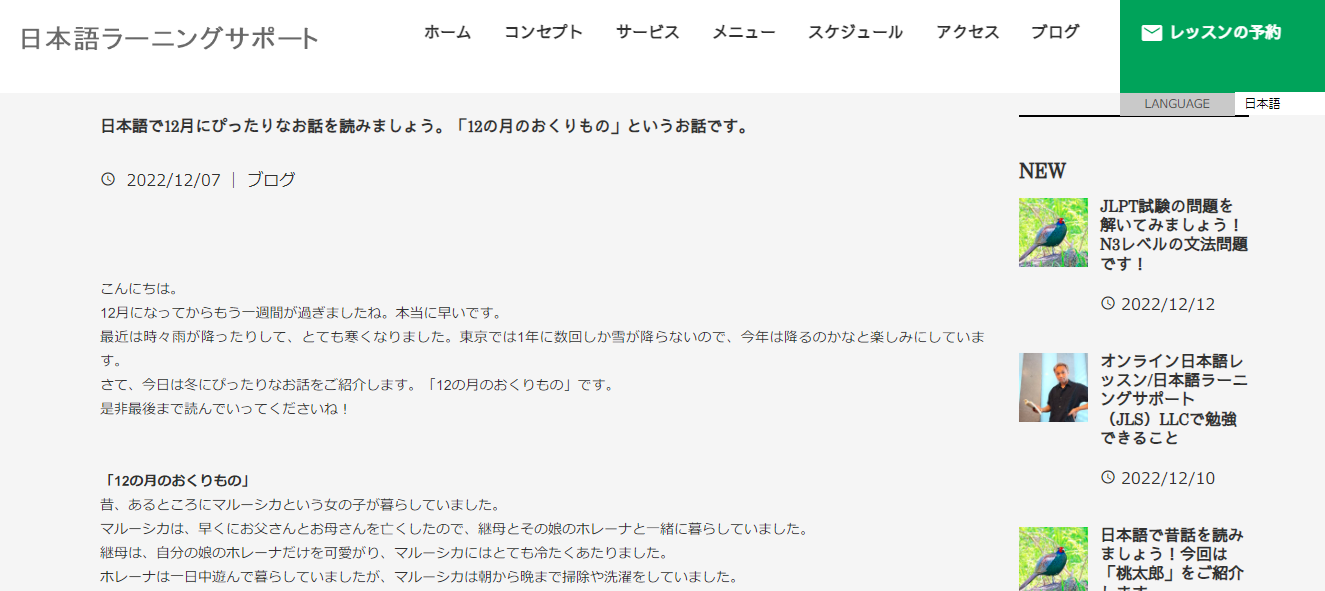
日本語ラーニングサポート (Nihongo Learning Support) is an amazing resource especially if you’re studying for the JLPT. They post content on their blog in relation to the timing of the JLPT every year, so if you follow along, you can build up your skills for the next test.
They also create original content for reading and testing practice, including based on Japanese folktales and rakugo stories, which gives you additional study material besides what you can find in textbooks. Not only that, their site is multilingual, so if the Japanese is a little too difficult, you can switch immediately over to your native language, like English, and check to see the translation to check your understanding.
For example, they introduce this fairy tale and in the following post, provide N2 level questions about the story to practice not just reading comprehension but grammar and vocabulary.
If you like their posts, they offer private Japanese lessons suited for your levels and goals. The teachers are highly qualified and are very interested in helping students succeed!
Ippo Ippo
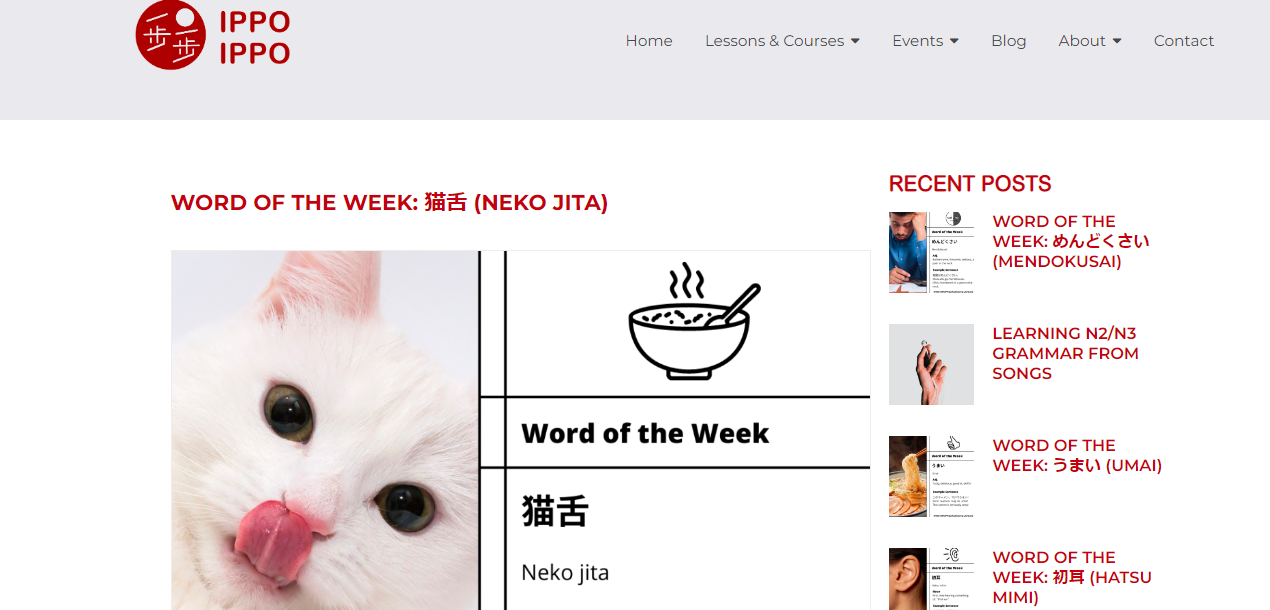
Ippo Ippo is a blog and website run by Elly, a private Japanese tutor based in Scotland. Ippo Ippo (一歩一歩) is Japanese for “step by step”. One very encouraging thing for Japanese learners - especially those who are adults - is that Elly learned and became fluent in Japanese as an adult, so it means it’s definitely possible.
The blog usually introduces a “Word of the Week” with in depth explanations and examples, as well as fun visuals. Take the 猫舌 (Neko jita) post for example. There’s the (very cute!) top visual, example sentences and dialogue, and extra explanations which show how in tune the writer is with questions that those studying Japanese may have.
There are also other types of posts, about Japanese culture, interviews, personal experiences and more. A fun post is “Learning N2/N3 Grammar from Songs” which is a great intro to how getting into Japanese music can help with building vocabulary and general understanding of how Japanese is used.
If you’re interested in taking lessons, Ippo Ippo offers classes from Travel Japanese up to N2 level, so it’s easy to find a great fit for you!
Japanese Sites and Blogs for Advanced Learners (JLPT N1)
日本語教師のネタ帳
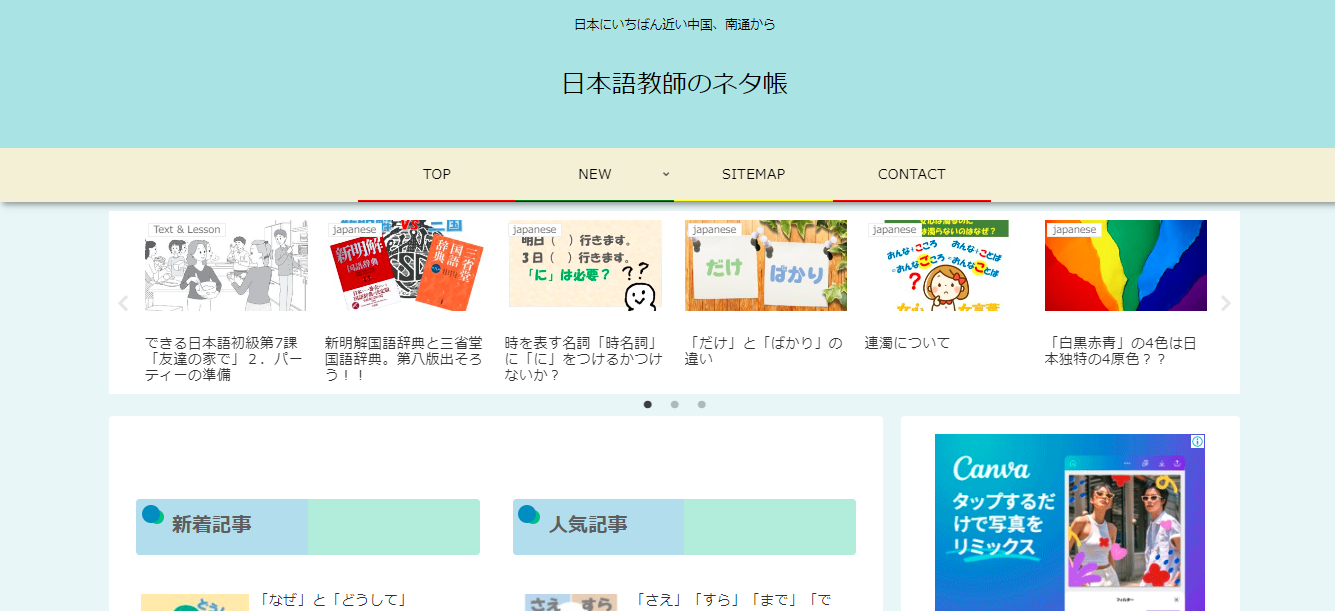
日本語教師のネタ帳 (Nihongo Kyoushi no Netachou) is run by Katsukawa-san, a Japanese language professor who teaches Japanese at a university in Nantong, China. He began the blog, hoping it would be helpful for Japanese learners.
Popular posts on this blog are ones that explain the difference between similar words.
For example
- the difference between さえ、すら、まで、でも
- the difference between かわいそう、かわいい、きのどく
- the difference between なぜ and どうして
You must be at a higher level to read and understand the explanations in all Japanese, but the explanations are structured in a way - with visuals - that makes it easier to understand.
There’s also mini lessons as well as personal essays about Katsukawa’s life and thoughts, all of which provide a variety of materials to practice reading.
KJLTIA
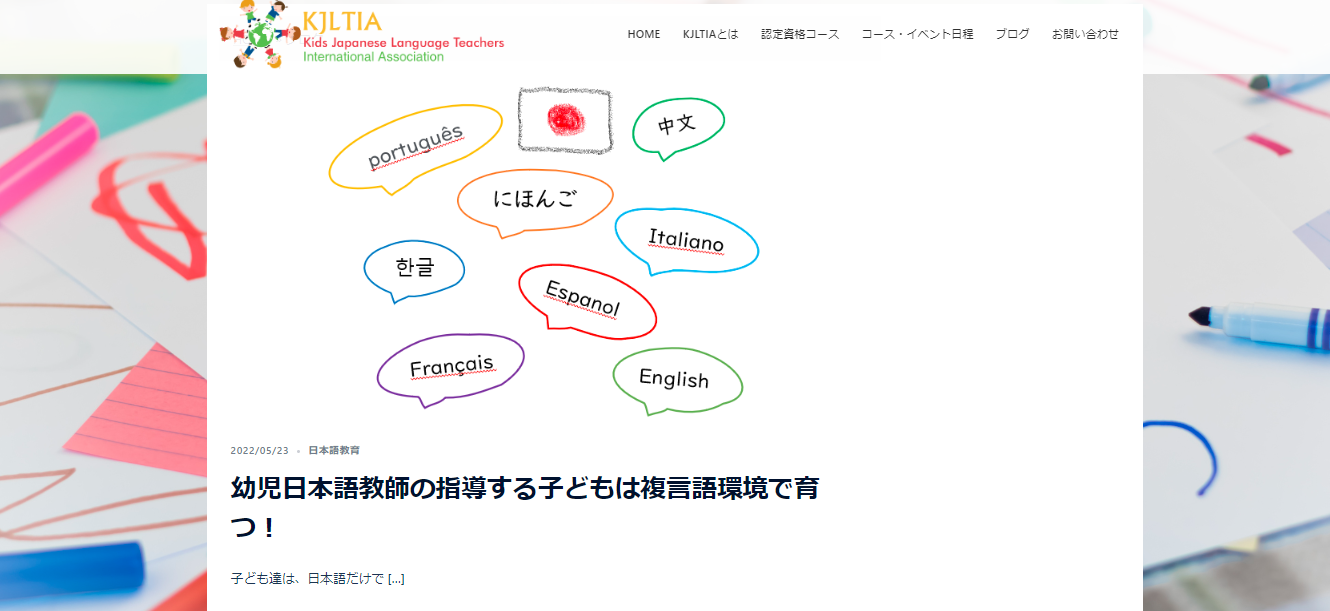
This one is a little different from the others as Kids Japanese Language Teachers International Association (KJLTIA) - 幼児日本語教師協会 in Japanese - is more of a resource for those teaching Japanese to young children.
However, if you have a very strong grasp on Japanese, you can navigate through their materials and advice to teachers to read about teaching (and therefore learning) theories and strategies.
This is also a valuable resource if you want to teach Japanese someday, or if you would like to raise your children learning Japanese, especially outside of Japan.
KJLTIA also provides original teaching materials, such as YouTube videos which include songs and quizzes you can use during lessons.
If you are interesting in teaching Japanese, you can also take their accreditation courses as well as get connected with other Japanese language teachers around the world.
Japanese Sites and Blogs for a Focus on Speaking
There are many resources simply for studying, but if you’re more interested in just learning how to speak Japanese, there are better suited resources for you, like the following!
Rays Lighthouse

From the moment you open the site Rays Lighthouse, you can tell that Ray uses Japanese in many different situations - travel, teaching, translation - which makes his site a great choice to get a range of resources when it comes to learning and using Japanese.
Taking a look at his blog, you can get information about all aspects of life in Japan - food, places to visit, trains, and more! It’s a great place to get a glimpse into Japanese culture and life, and things you should know before visiting or living here.
For those who want to or are studying Japanese, Rays Lighthouse offers a wide range of options.
- Private lessons at a cafe or online
- A 2-week study abroad program where you can learn Japanese and travel around Tokyo! This is an immersive option that allows you to accomplish 2 things at once!
- A handy book of 125 Japanese Useful Phrases you should know! (Available on Amazon - paperback and Kindle edition)
If you’re nervous about starting to learn Japanese, it’s clear that Rays Lighthouse is a friendly and fun option to check out.
JAPAN LANGUAGE FACTORY
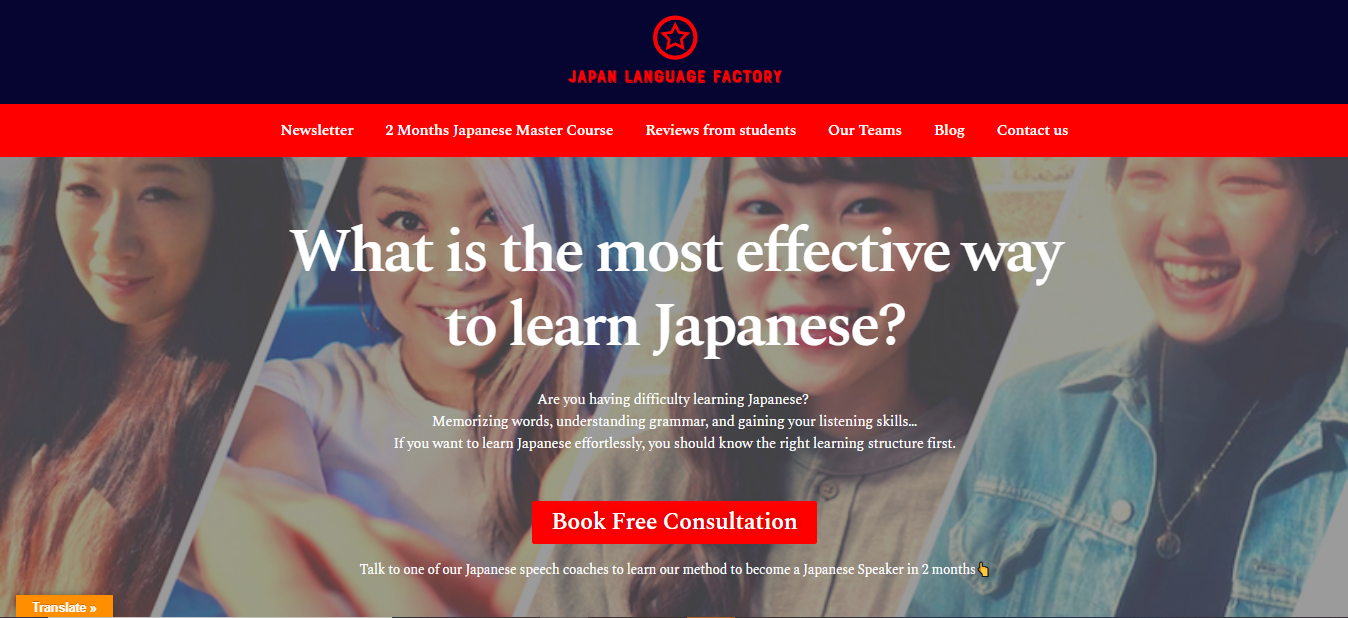
And last but not least on our list is Japanese Language Factory.
Sometimes the hurdle of learning Japanese isn’t the language itself, but mindset. Japanese Language Factory does not beat around the bush about how certain common teaching methods are just not a good fit for some people, and will help you move past what’s holding you back and actually start speaking Japanese.
Just check out the blog posts! Founder Terumi Kai discusses and tears down various misconceptions when it comes to learning Japanese, while also providing encouragement.
Along with the YouTube videos often featuring a variety of guests and students who were struggling with learning Japanese as well as tips about common mistakes in Japanese, Terumi’s explanations are very easy to understand, especially as Terumi herself is studying other languages while teaching Japanese.
Japanese Language Factory can be your key to start speaking Japanese. Check out their 2-month program and consider a free consultation.
To Close
There’s SO many different resources out there for Japanese learners, so we hope this provides you with some more options to check out and take advantage of!

































